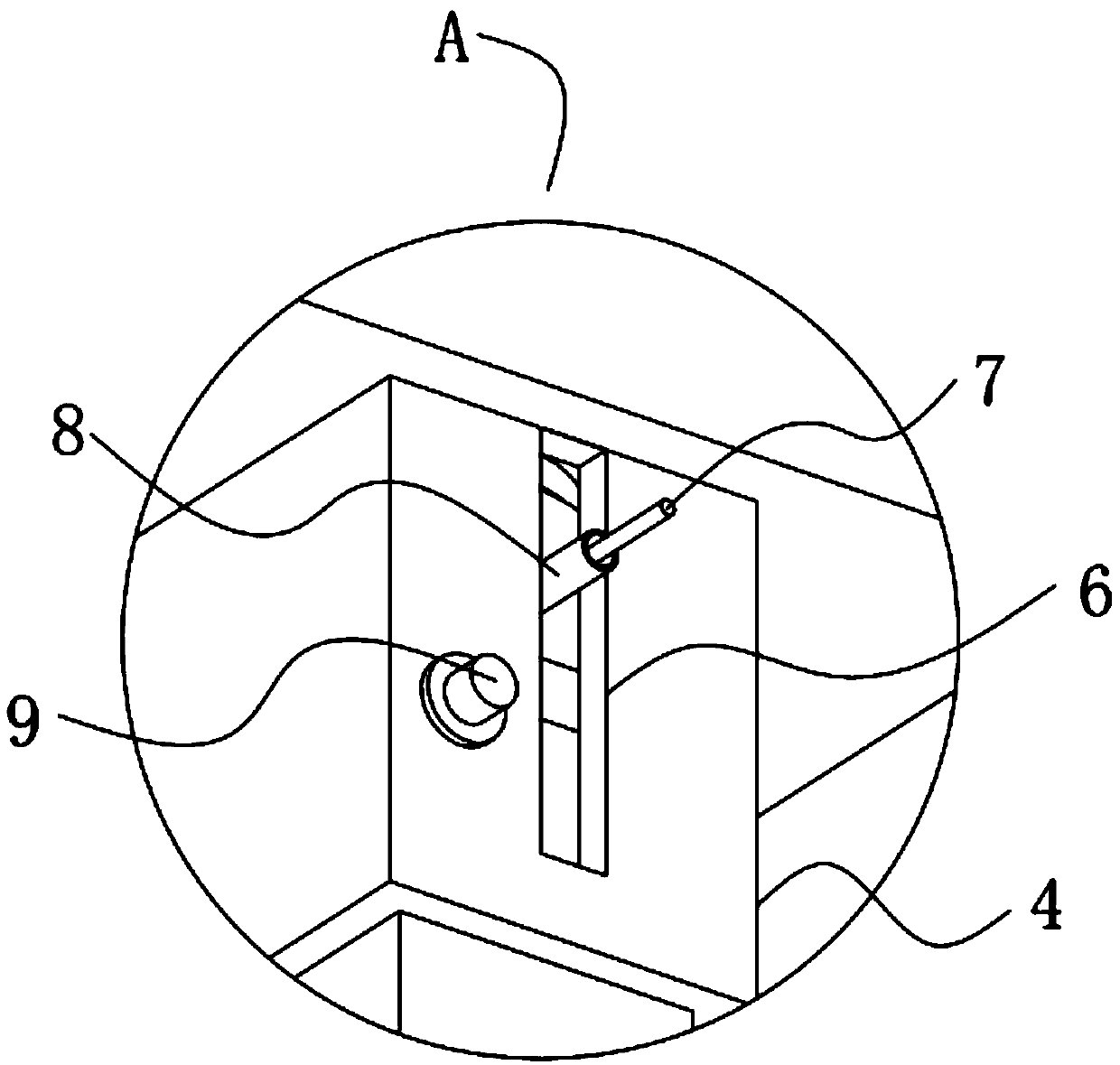Segmented hot-melt pile end support stiffness adjusting device
An adjustment device and hot-melt technology, applied in construction, coating, infrastructure engineering, etc., can solve the problems of not being able to actively intervene and adjust according to needs, and achieve the effects of flexible and convenient control and adjustment, stable operation, and not easy to delaminate
- Summary
- Abstract
- Description
- Claims
- Application Information
AI Technical Summary
Problems solved by technology
Method used
Image
Examples
Embodiment 1
[0052] A segmental heat-melted pile end support stiffness adjustment device, such as figure 1 , 6 As shown in and 7, it includes a raft 1 and a pile body 3 fixedly installed on the pile foundation, the bottom of the raft 1 is poured with a ground beam 2, and the bottom of the ground beam 2 is reserved with an installation groove 14. The inside of the mounting groove 14 is fixedly equipped with a cylinder body 4, the top of the cylinder body 4 is a closed structure, and the bottom of the cylinder body 4 is an open structure, and the upper end of the pile body 3 is movably inserted in the cylinder body 4. Inside the bottom of the pile body 3, and the upper end of the pile body 3 is fixedly installed with a top plate 13, and a segmented heat-melt telescopic element 12 is arranged between the top of the top plate 13 and the inner top wall of the cylinder body 4.
[0053] The ability to increase or restore the resistance to deformation of the segmented hot-melt stretchable element...
Embodiment 2
[0072] The difference from Example 1 is that a protective layer is also provided on the surface of the cylindrical electric heating plate 15, and the protective layer is prepared by the following method:
[0073] Take the following raw materials and weigh them by weight: 20 parts of ceramic particles, 8 parts of epoxy resin, 12 parts of silicon nitride, 18 parts of polyethylene, 10 parts of vinyl acetate, 11 parts of acrylic emulsion, 10 parts of silicone rubber, propylene glycol methyl ether 2 parts of acetate, 2 parts of diethylthiourea, 1 part of emulsified silicone oil, 3 parts of silane coupling agent, 1 part of organic bentonite and 30 parts of ethanol;
[0074] S1. Add the weighed acrylic emulsion, propylene glycol methyl ether acetate, diethylthiourea, emulsified silicone oil, silane coupling agent and ethanol into the mixer and stir for 25min at a stirring speed of 500r / min to prepare a mixed solution;
[0075] S2. Add organic bentonite, ceramic particles, epoxy resin...
Embodiment 3
[0081] The difference with embodiment 2 is the preparation of protective layer, and its specific preparation method is as follows:
[0082] Take the following raw materials and weigh them by weight: 20 parts of ceramic particles, 8 parts of epoxy resin, 12 parts of silicon nitride, 18 parts of polyethylene, 10 parts of vinyl acetate, 13 parts of acrylic emulsion, 11 parts of silicone rubber, propylene glycol methyl ether 3 parts of acetate, 3 parts of diethylthiourea, 2 parts of emulsified silicone oil, 4 parts of silane coupling agent, 2 parts of organic bentonite and 40 parts of ethanol;
[0083] S1. Add the weighed acrylic emulsion, propylene glycol methyl ether acetate, diethylthiourea, emulsified silicone oil, silane coupling agent and ethanol into the mixer and stir for 30min at a stirring speed of 600r / min to prepare a mixed solution;
[0084] S2. Add organic bentonite, ceramic particles, epoxy resin, silicon nitride, polyethylene, vinyl acetate and silicone rubber into...
PUM
 Login to View More
Login to View More Abstract
Description
Claims
Application Information
 Login to View More
Login to View More - R&D
- Intellectual Property
- Life Sciences
- Materials
- Tech Scout
- Unparalleled Data Quality
- Higher Quality Content
- 60% Fewer Hallucinations
Browse by: Latest US Patents, China's latest patents, Technical Efficacy Thesaurus, Application Domain, Technology Topic, Popular Technical Reports.
© 2025 PatSnap. All rights reserved.Legal|Privacy policy|Modern Slavery Act Transparency Statement|Sitemap|About US| Contact US: help@patsnap.com



